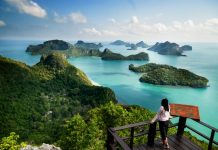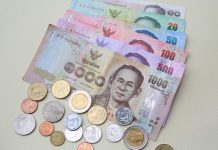
In Thailand, Elephant is a significant animal that Thais praise and honour. An elephant is a symbolic object on the national flag and also the auspicious animal of the king. Why does the elephant is so important in Thailand? Here we have a story of elephant in Thailand that you would love to know.
The Importance of Elephant in Thailand
1. Elephant is an auspicious animal.
Elephant is an auspicious animal in particular the White Elephant that considered the sacred elephant which is a symbol of the power of the king. In the reign of King Rama II of Rattakosin dynasty, Siam used the white elephant as a symbol on the national flag.
2. Elephant protects the independence of the country.
According to the history, it noted that the elephant is part of the military troops to protect the nation especially during the period of King Naresuan the Great that he made the war elephant and conquered in this was over Hansa.
3. The elephant is a symbol to establish the relation with other countries.
In the reign of King Rama IV, he visited Singapore and Batavia (or Jakarta, Indonesia) and he graciously gave the bronze elephant as a gift to those regions.
4. Elephant involves the essential royal ceremonies.
Since the early of Rattanakosin Kingdom, the elephant recognized as carrier to invite the Emerald Buddha to enshrine at Wat Phra Si Rattana Sassadaram or well-known as the Temple of the Emerald Buddha. Moreover, elephant is a part of many royal ceremonies for example the Celebrations on the King’s Birthday Anniversary and the Coronation Ceremony have to dress up the white elephant with the elephant’s ornament to stand by at the platform in the west of the Dusita Phirom Hall in the Grand Palace as the majestic symbol of the power of the king.
5. Elephant is used as a vehicle.
Elephant as a vehicle when the transportation was not advanced as in the present. In the past, the elephant was used for transport because it’s large size, talented, and influential.
6. Elephant is used in forestry industry.
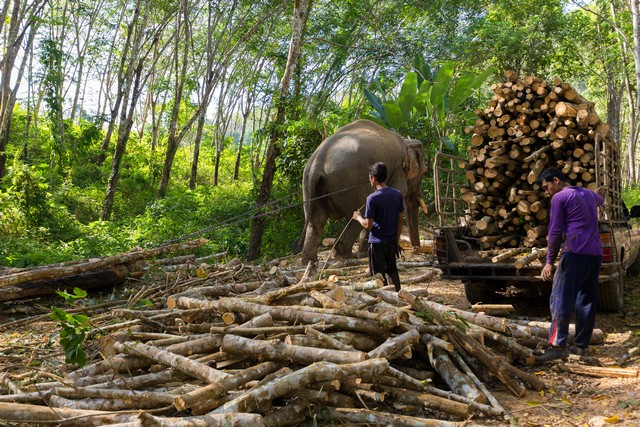
Using elephant in the forestry industry in Thailand widely – fell tree, lumber, transfer to the plantation or marketplace. Regarding the forest preservation and management in Thailand, using of the elephant to draw the wood is very appropriated since it can walk without destroying the young plants, the soil will not be stable, and no need to cut the roads. Moreover, the elephant can climb up to the mountain and last long exceed to 50 years.
The Importance of the Elephant in Thailand’s History
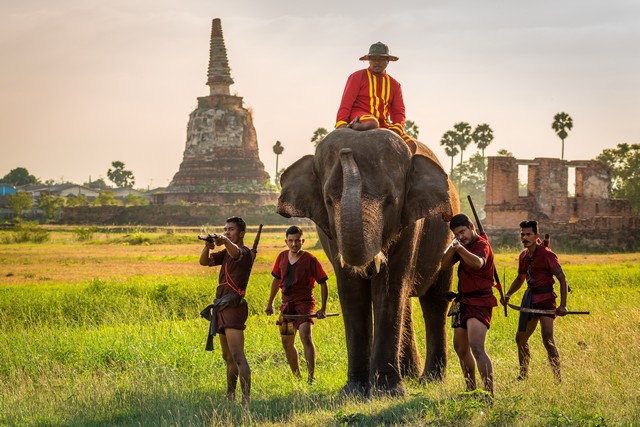
The statement recorded in the first inscription of Sukhothai showed that the elephant during the Sukhothai era as the warlord which involved in any battle to the victory. Also, the kings used the elephant as the vehicle to lead the people to make the merit at the monastery in Aranyik district. It could say that whether the nation is in peace or war, the elephant was paired with Sukhothai kingdom abidingly. Consequently, there set the elephant riding course as an essential subject for the royal family and elite class.
In the past, the elephant was the strategical arms which metaphor as the tank nowadays, however, the victory with the elephant seems to be more dignity since the man rides on the elephant and fight bravely.
Elephant in Thailand’s Historical Battle
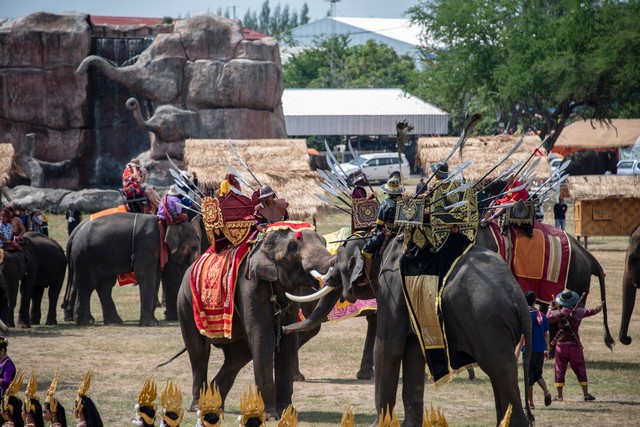
Although the elephant was the primary armed force in any war in the old time, it was rare to have “the Elephant Duel”. According to the history mentioned to the war, the elephant is hand-to-hand combat on elephants’ backs between the king or the commander-in-chief. And more potent of the elephant will support the warrior to fight more strategic until he conquers over the enemy. There were lots of war elephants since the Ayutthaya era – in the reign of King Borommatrailokanat, he got a white elephant which is the first royal white elephant of the Ayutthaya Kingdom. This brought about another name of the king as “the White Elephant King”. In the period of King Maha Chakkraphat, he rode on the elephant in the war with Burma of which led to the “Legend of Sri Suriyothai,” his wife who participated in the war and sacrificed her life to protect her husband from this battle.
And the most importance Elephant Duel which is very insignificant for Thais because it is the independence recovery of Siam. The battle is between King Naresuan the Great and the Uparaja (viceroy) of Hansa. The elephant that king Naresuan ride for this battle named “Chaophraya Chaiyanuphap” and once he conquered this war then renamed as “Chaophraya Prap Hansa” (means the conqueror of Hansa). And the elephant of Ekathotsarot his younger brother named “Chaophraya Prap Traichak”. (Chaophraya is the supreme title of the court official in Thailand in the past).
Then, in Thonburi era, there was disharmony among the people, and the enemy took this chance to attack the kingdom. And king Taksin the Great also rode on the elephant to fight for this war, as well.
Ages of Thai Elephant
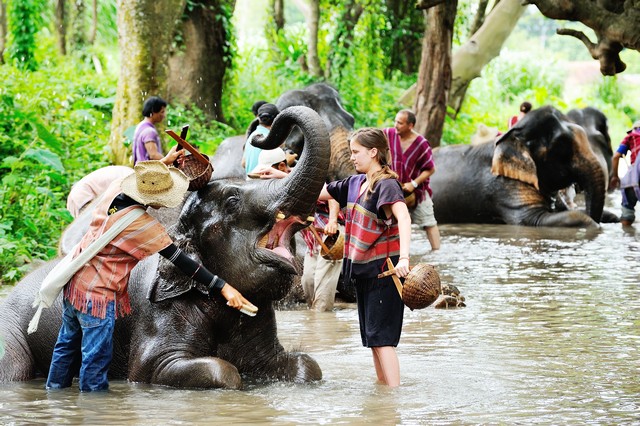
Laithongrien Meepan is a world-renowned Elephant expert, and the owner of the Ayutthaya Elephant Palace, Royal Elephant Kraal Village and the Phra Kochabaan Foundation explains the characters of Thai elephant which divided into 3 periods by following;
Elephant as the Noble (Chaophraya Age): It is the first period that the elephant as the warrior that fight side-by-side the armed force in any wars until it honoured as Chaophraya which is the highest title of Thai nobility in the past.
Elephant as the Labour: This age the elephant was used for the labour work in the forestry. Once, Thailand sent 47,000 elephants to Bombay-Burma Company that got the concession to do the forestry in the northern territory of Thailand since 1934 in which for export specifically. Afterwards, Forest Act, B.E. 2484 (1941) proclaimed to stop the operation of all forestry concessions in total 276 plantations. Therefore, the end of this era and move forward to the next age of the elephant.
Elephant as the Burglar at the side street: This period so-called the declining of the elephant which had taken more than 3 decades until nowadays that is the fourth ages of the elephant.
Elephant as the Show Performer: The elephant is part of Thai tourism as the main character to attract the tourists especially from abroad to see the elephant talented show.
Thai Elephant in the Royal Ceremony
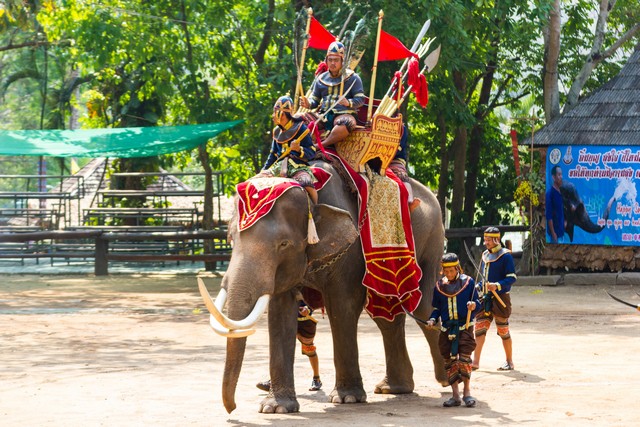
Thailand is a country which presents its identity through the way of life including traditions, culture, and rites for a long time ago. Whether traditional or royal rituals and ceremonies are developed from the ideologies and beliefs, and the elephant has involved in the events to represent to the sacred things. In particular to any of the royal ceremonies that include the elephant as the auspicious thing and the symbol of the power of the king. Since the old time, the white elephant is an iconic elephant to involve to the royal ceremonies, for example, the celebration of the King’s birthday anniversary and the royal coronation ceremony.
According to the royal chronicle of Rattanakosin recorded that in the reign of King Rama 3 there was the royal elephant to stand at the platform to welcome the official foreign visitors. And in the reign of King Rama 4 which mentioned to the coronation ceremony of King Pinklao, the second king of Siam rode on the elephant named “Chaophraya Chaiyanuphab”.
As well as the record in Rama 5 noted that the elephant called “Phra Vimol Rattanakirinee” which is the white elephant of King Rama 4 dressed up with the elephant ornaments and stood next to King Rama 5 in the Royal Ploughing Ceremony. The elephant to be used in this kind of the event need to be solemnised to receive the title before the royal ceremony. However, it doesn’t set the exact time of the celebration, but it depends on the occasion in each era. The celebration of which took place during the reign of King Bhumibhol is two days.
On March 13 in every year is set as the Thai Elephant Day to honour the elephant as the insignificant animal of the nation.
Experience Elephant in Thailand
Many tourists from worldwide come to visit Thailand and wish to witness Thai elephant once in the lifetime. And there are many exciting elephant tourist attractions in Thailand. And here are some that we would like to recommend for the tourist to take time to visit that we guarantee it would be worthwhile for you to go.
1. Thai Elephant Conservation Center, Lampang
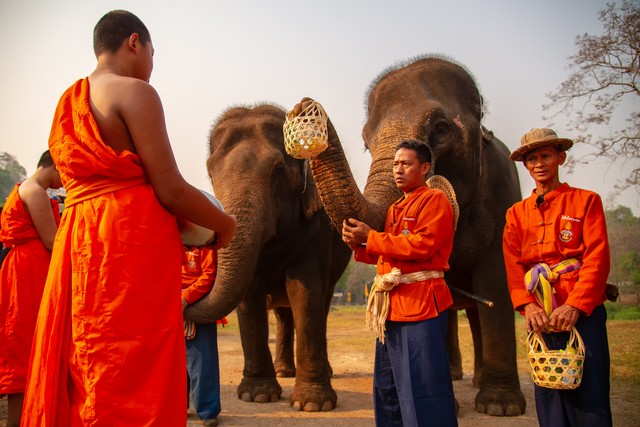
Besides travel at the site, the tourist also can take mahout course here as the place is a training centre which provides the amateur mahout courses – 1 day, 2 days, 3 days, or month. Most of the tourists who visit this elephant centre are foreigners especially from Europe and the USA that come to study the elephant’s life, mahout’s life, how to live in the forest.
The elephant centre received the Tourism Awards in the natural tourist attraction in 1998. The centre also provides the “homestay” service that the tourists can touch the nature and learn about the life between the elephant and mahout intimately.
Thai Elephant Conservation Center, Lampang or The National Elephant Institute (NEI) under the patronage of HRH Princess Galyani Vadhana is the first training centre for the young elephants in the world located at Mae Huad, Ngao district in Lampang in the north of Thailand. However, with the limitation of space then it relocated to the new location which is the current site of the centre. The place opened officially in 1992 presided by HRH Princess Maha Chakri Sirindhorn.
The location features lots of activities for the tourist to enjoy including the elephant show of original forestry by elephant with both Thai and English voiceover, the painting shows that the tourist can get the picture that painted by elephant as a souvenir, elephant music show, and showering for the elephant surrounded with the pure nature and beautiful environment. Furthermore, there are the nature trails that passe the mahout village and forest.
How to get there:
To get to the place is very convenient, the elephant centre is 24 km from Lampang town on the highway number 11 (Lampang-Lampoon). So, it is easy for the visitors to travel from Chiang Mai.
2. Ban Tha Klang Elephant Village, Surin

This is the largest elephant tourist attraction in the world. The place offers you an experience to see the life of people here with the elephant pet. Besides, the visitors will enjoy the life of the elephant here you also can witness the scenery of Mae Chee and Moon rivers meeting point that is just 3 km from the village. At that place, you can take leisure with a beautiful view and nature.
Ban Tha Klang Elephant Village is a centre of the elephants in Ban Tha Po, Tha Klang, and other villages in Surin more than 200 elephants. The people who live in the town mostly are the mahout. The tourist can see the life between mahout and elephant closely. Each residence has space for the elephant to live as a pet which is very attractive and fantastic experience for the tourists to experience especially the foreigners. The elephants at Tha Klang Village are friendly and get along well with the human.
The elephant show at the elephant village is 2 rounds per day;
- Morning at 10.00am
- Afternoon at 2.00pm
The Admission Fee:
Adult: THB50
Teenager: THB20
Small children: THB10
Foreigners: THB100
3. Mae Sa Elephant Camp, Chiang Mai
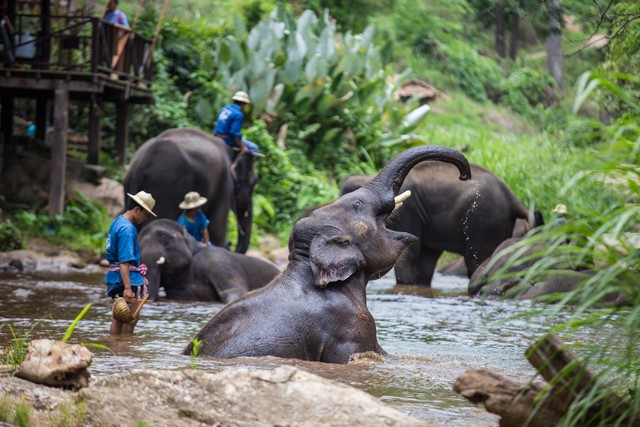
Mae Sa Elephant Camp is one of the pioneered elephant camps in Chiang Mai that has operated for over 3 decades. The field locates at Mae Rim district on the road Mae Rim-Sameung or the same direction to go to the famous sightseeing “Mon Chaem”. The camp features many interesting activities – riding on the elephant and elephant talented show by more than 20 elephants that are all well trained. The performance show here scheduled at 8.00am, 9.40am, and 1.30pm.
The elephants here is smart, adorable, and friendly. And for anyone who would like to get closer with the elephant. The camp also offers various mahout training for the visitors to try – 1 day to 3-day-2-night courses included accommodation.
Apart from Mae Sa Elephant Camp, there are many other elephant camps in Chiang Mai that provide the tourists with many activities and entertainment by the elephants, for example, Mae Taman Elephant Camp in Mae Taeng that offers the raft cruising, cow cart touring, nature trail to visit the hill tribal village. And next to the Mae Sa Elephant Camp which is Elephant Life Experience or E.L.E. provides the High Tea service rounded with the lovely nature and the accommodation which is perfect for the couple. And also, the recreation activities for the incentive market group. And Chiang Dao Elephant Training Center has highlighted with riding on the elephant to see the beautiful landscape of both sides of Ping river.
4. Wandering in the vineyards on the elephant at Hua Hin Hill Vineyard.
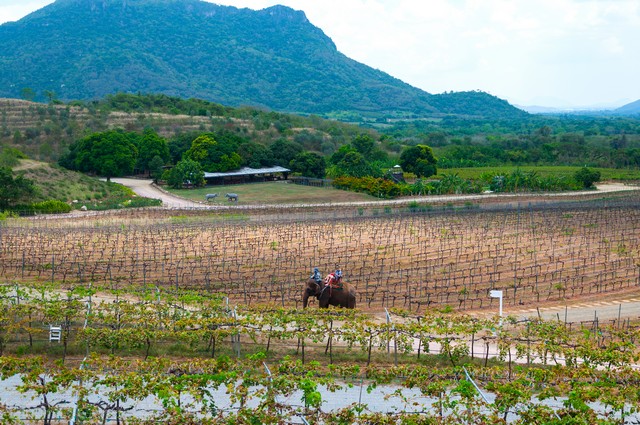
Enjoy the Mediterranean alike scenery in the secret vineyard at Hua Hin. This place provides you with a remarkable experience to travel around the orchard. Besides, you will experience the vineyard farming life you also stroll around the farm on the lovely elephant. So, you will witness great perspective of the endless vineyard from the top view that environed with the green mountains and a gentle wind from the sea that flows across the land. And if you are not someone who is dread of high places you can enjoy biking on the bicycle along the roads inside the vineyard which are the clear route is about 3 km and the rough road is about 1 km. And the mus- not-miss thing to do here is tasting the delicious food and sip the fine wine at The Sala Wine bar and Bistro, a fine dining restaurant of the place.
Operating Time:
Hua Hin Hill Vineyard opens daily between 11.00am-6.00pm. And a perfect time to visit the place is in February – March annually when is the harvest time of the grape.
5. Ayutthaya Wangchgag the corral, Ayutthaya Elephant Palace & Royal Kraal, Ayutthaya Elephant Camp
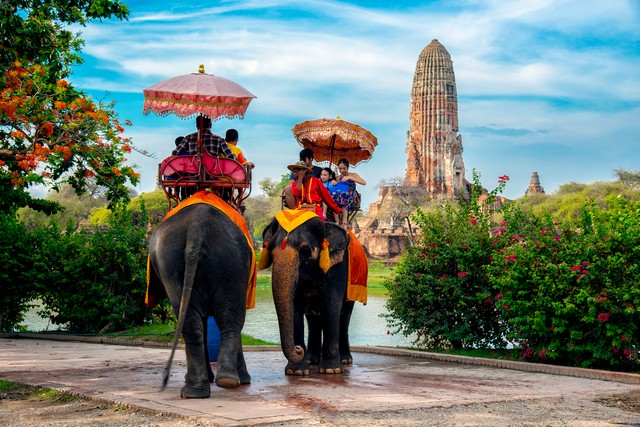
The elephant camp is one of a kind from other elephant tourist attractions in this world because its location is right in the middle of the town to set the place as the potential and strategic tourist spot for Ayutthaya in the occasion that UNESCO classified the Ayutthaya Historical Park district to be the World Heritage. The opening event of the place was set remarkably in 1997 with the procession of 109 elephants in the parade and the demonstration of the elephant round-up ceremony. And it has been more than 20 years making this place becomes the elephant learning center and tourist attraction.
The location features the large elephant ground where is the leisure area of the mahouts and elephants. Anyone who walks to the spot, regularly feed the elephants with bananas and sugar canes and the elephant reaching its trunk to get the food. Another area that is interesting to sightsee as a highlight of the place is performance showground that offers the visitors to take the photo with the elephant. There is Rhythmic show by the young elephant with a funny voice over in every weekends and holiday. And a hit activity “Walk under the Elephant for good luck”.
Operating Time:
Currently, the camp has more than 100 elephants and initiating lots of beneficial projects for Thai elephant, i.e. The Elephant Breeding Center, Young Elephant Care Center, Home for the Old Elephant, Elephant Training based on the Royal Textbook, etc. The Ayutthaya Elephant Camp opens daily between 9.00am-5.00pm, and the elephant riding service is THB 100-500 following to the time which is between 15 – 30 minutes. Photo taking with the elephant is THB40 and also the accommodation offers for the tourist who would like to experience the life of elephant closely.
Prepare yourself before touring at the Elephant site.
Taking a trip to any elephant tourist attractions in Thailand, apart from the healthy physical condition the tourist should bear in mind that you genuinely like the elephant or at least love the animals. Otherwise, the trip would be awful. And the most important thing does not goad the elephant since it may be fierce at some point even though it is well trained. More than that, the tourist should travel with the idea “save the nature” because most of the elephant camps are in the wood, so it is not appropriate behavior to destroy any plants and also keeps the place clean. And for the costume, the tourist should get the dress that suitable for the weather that is something comfortable since you need to climb up and down to the elephant. Well, now we wish you will have a pleasant trip to see the elephant in Thailand.



